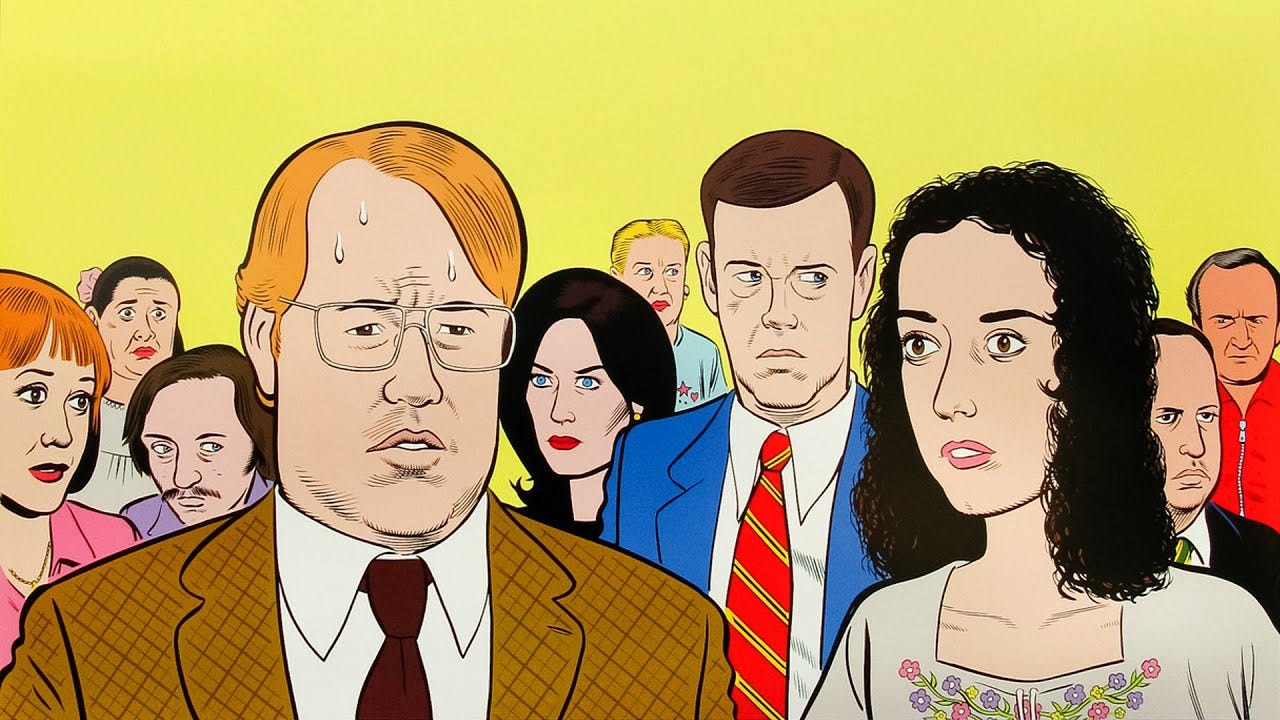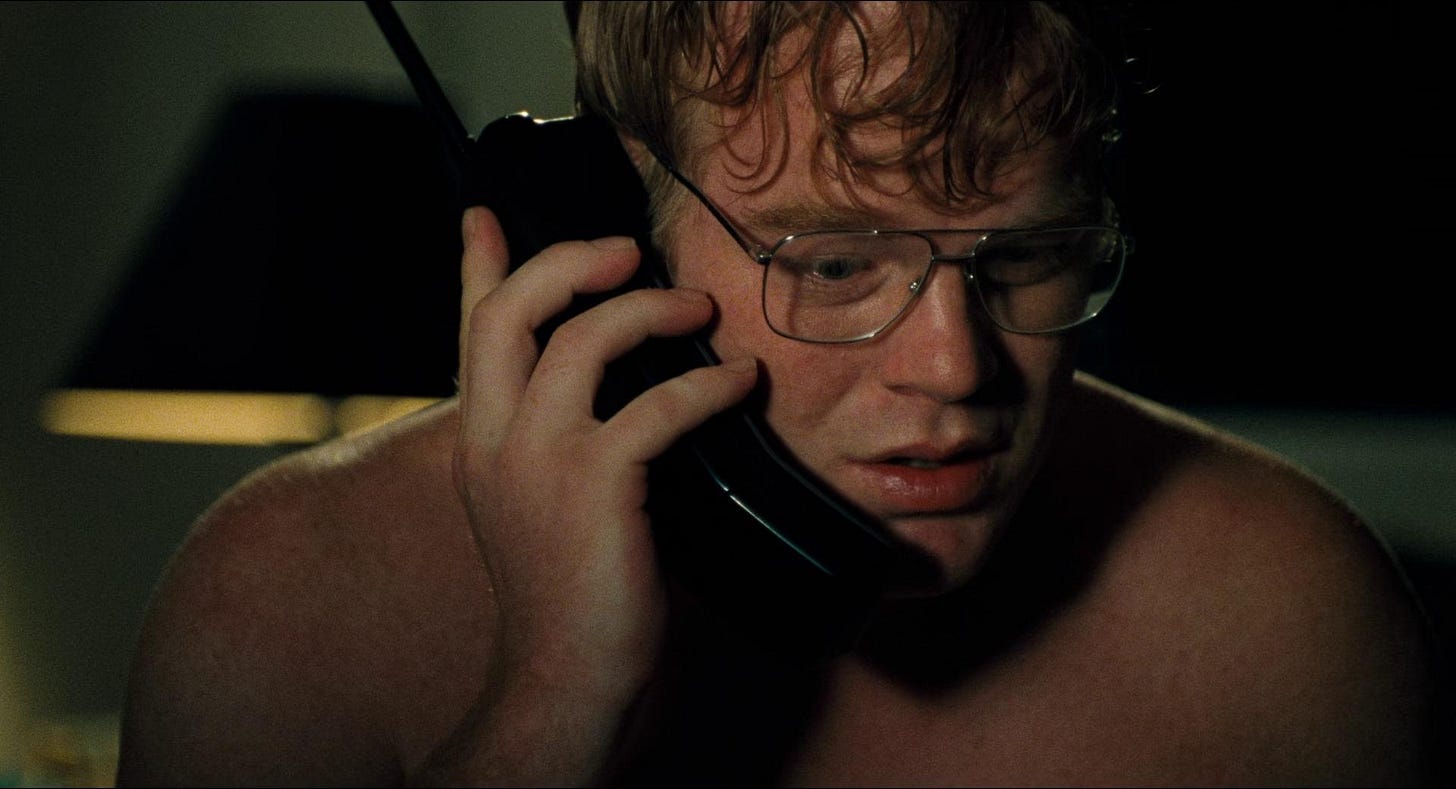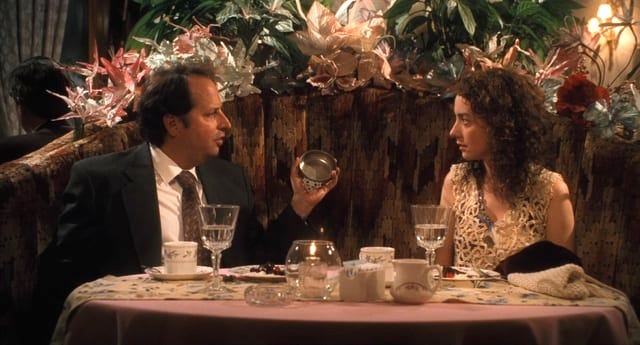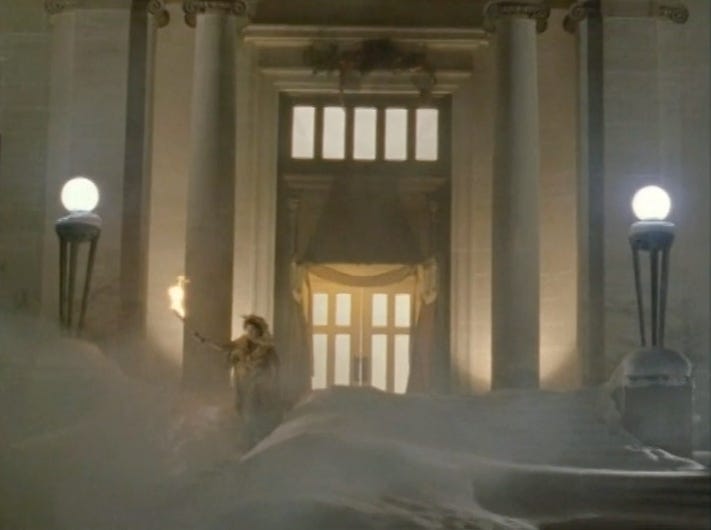I went to the IFC Center to see the 4K restoration of Akira Kurosawa’s Ran (1985) and was greeted by a trailer for Happiness (1998), the first film I worked on as a production assistant. It was just re-released with a new 4K restoration on June 6, 2025.
See Happiness in the theater if you can or rent it. It’s an amazing, hilarious, and disturbing film. All the trigger warnings for this one.
The trailer got me thinking about my newly graduated cinematography students and my 21-year-old mindset when I was struggling to join the film business.
Three months into my life and film career in New York City, I was almost broke.
Since childhood, I had always wanted to live in the city. I moved in with a mattress, two suitcases, and an unpaid internship at the flagship independent film production company, Good Machine. This was the place to be in the mid-to-late 90s, Ted Hope and James Schamus were exponentially expanding the scope of indie films with Ang Lee, Hal Hartley, Todd Haynes, Nicole Holofcener, and Ed Burns, among many others.
It was a great foot in the door and helped me get a sense of the production centers of the city as well as a chance to meet and work with top-producing talent. But again, unpaid.
And that apartment was $550/month, more than I had ever paid for anything. As I learned the ropes, my $4.35/hr college lifeguarding nest egg slowly drained away, despite my $25/week grocery budget. I kept a list of every dollar spent and walked over the Brooklyn Bridge to the office on Varick Street to save the $1.50 subway token each way. But I’m not complaining.
I loved it too; anyone who knows me knows how much I love to save a buck! DIY filmmaker to the core, here.
But as I approached the end of my 3-month internship contract, I started getting worried about how I was going to continue living in one of the most expensive places in the world.
Enter, Todd Solondz.
Todd had been popping into the office with his “Untitled” project with increasing frequency throughout the summer, and August brought interviews for set work. I figured that after three months of free labor, I was almost guaranteed a production assistant (P.A.) spot on the shoot, which at $75/day would put me in the black for the next few months.
But the person who interviewed me didn’t know me, and certainly wasn’t aware of the great sacrifices I had already offered to the film gods. They just looked at my blank-ass resume.
“No experience, sorry.”
How much experience is required for the introductory set job? I was distraught.
Enter, Amanda.
Amanda was the office coordinator at Good Machine. She knew I was reliable and hard working, so she concocted a plan. The main department heads were going on a tech scout in 15-passenger vans, and they needed drivers. Amanda was sure that if I drove them around New Jersey for two days, they would like me and then hire me.
Fortunately, I’m a very good driver. And it got me out of doing photocopies and other office grunt work for two days, so it was win-win.
Lesson from set #1: They have to trust you
Everyone wants to hire their friends or people they already know or trust, so it’s hard to break in. But if you bide your time and always do a good job, you might get a chance. Whatever you do, don’t try to impress them. Just be highly competent and pay attention.
Everyone but the Location Assistant liked my driving. We loaded into the van on Canal Street and they said, “Go to the Lincoln Tunnel,” to which I replied, “Great. How do I get there?” This was before smartphones and GPS. Before MapQuest. I had spent a few months in the city as a pedestrian and occasional straphanger, but had not yet driven or learned what streets led to bridges and tunnels.
After a brief meltdown was directed my way, directions were given, and we were off.
I learned so much in those two days of driving the crew around. I watched how the cinematographer, Maryse Alberti, spoke with her Gaffer and Key Grip about lighting. We closed our eyes and listened to the locations. We drove on a series of roads to find which would be smoothest for some process trailer shots. I learned that a process trailer is a pickup truck that pulls a car around so it looks like an actor is driving, but without endangering other drivers.
But the biggest lesson was that you have to be there and prove yourself. Over and over and over. After the two days of driving, I was rewarded with a two-week hire, to help drive a 14’ cube truck for the Props department and work on set. I even got to drive Dylan Baker and Philip Seymour Hoffman to set a few times, which was nerve-wracking and exciting.
Lesson from set #2: Always be working.
One of the main P.A. jobs is to lock up the set when the camera and sound are rolling. The Assistant Director or Key P.A. will delegate positions inside and out, and you must stay there until reassigned. We had an incredible A.D. team on the film, and I got amazing training. After a few days, I realized that I had not really been qualified when I applied, so even though P.A. is entry-level, there’s still a lot of training they need to know. But you can learn on the job.
I was often by the grip truck parked in the house’s driveway, frantically trying to keep the workers quiet. Every time we yelled “cut,” the buzz saws started up again to prepare for the next shot. There is no waiting to make the next shot happen, each department is responsible for pushing forward their portion of “making the day.”
A production assistant should never be standing around with nothing to do. There is always something to do. If I didn’t know what to do, I asked my immediate boss, “What can I help you with?”
We didn’t have phones back then, of course, and neither should you (on set). When people see you on your phone instead of staying vigilant, they might not hire you again. You must pay attention and look for ways to improve your work.
There will be moments of downtime throughout the day, so if you need to check a message, step away from set.
Lesson from set #3: Always keep an eye on the camera
Firewatch the camera, even when it seems unnecessary.
The shoot began in Solonz’s suburban New Jersey hometown. A perfect place to live. Manicured lawns that met the street with a cobblestone ledge. You couldn’t ask for a better place to leave a camera and expect it to be there when you get back.
“Alan, get a plate and do fire watch for lunch,” came over the walkie. “Where’s the fire?” I asked. “In the bedroom, second floor.” I went upstairs and found the camera assistant clipping a space blanket over the camera. I couldn’t believe it, but they wanted me to sit by myself with the camera and just make sure nothing happened to it.
It seemed crazy at the time, but these days I get upset if no one is babysitting the camera on set. Anything can happen, and if something does, you'd better have insurance.
I sat there for half an hour. Me and the camera. Not an uninvented iPhone in sight.

Lesson from set #4: To get good sound, always carry a bribe
Lawnmowers are terrible. Leaf blowers are even worse. But a shopping cart echoes for miles.
Shooting in the suburbs meant the Location crew was always chasing down noises from every direction. Someone was always mowing, somewhere.
And a few bucks will help them find a way to be quiet.
When the shoot got to the city, there were other noises to worry about, and people to deal with to keep the noise down. Happiness had a great Sound Mixer who made sure that we turned off every toilet in the house and held elevators in the apartment building locations during takes.
I was always more of a picture guy, but I gleaned some great lessons from him about the importance of focused listening and consistent audio recording. But I must admit, the first time I squeezed under the toilet bowl to turn off the water valve, I wondered why I had bothered to memorize all those f-stops.
Lesson from Set #5: Always carry quarters.
You know, to make phone calls…
OK, so this one’s a bit anachronistic, but this was in the before times. The real lesson here is to always check in with production when you’re out doing runs.
Every time I left the set as a P.A., I was expected to check in with the production manager constantly. This took a little getting used to, as I had grown up as a responsible young person who followed instructions and came home when the job was done.
After each leg of a set run, I would track down a pay phone and call the set to give an update and see if anything else was needed before I returned.
These days, we can text or call on our own, of course, but the lesson remains the same. Things happen quickly on film sets, so when you’ve been away, you always need to check if anything else is needed.
Being a proactive and communicative assistant is always the best way to build trust and get more work. Working leads to more work. Build the freelancer mindset.
Lesson from set #6: Always be Crafty.
Do a good job and they can’t help but notice you.
As my two-week employment window closed, I began to worry again. I had learned so much in my time on set, but where was I going to get more paid work?
Enter, the Craft Service Guy.
Lucky for me, in those first shooting weeks, everyone hated the craft service.
Besides camera, sound, production design, actors, and directors, there is no more important film set job than the Crafty Dept. The guy they had hired was uninspired to make snacks, so he was quitting, and the whole crew was grumbling about the food.
I had my in.
I volunteered to take over craft service if it meant keeping my job, and on top of it, the previous guy let me know that it paid an extra $5 per day over the regular P.A. rate. It also came with more responsibility.
I now had a cargo van of my own to take between home and set, and more responsibilities. I learned how to keep track of a petty cash float, to always get receipts, tape them up, and turn them in to receive the next float. I became a Costco shopper.
But most importantly, I figured out how craft service would help me stand out on the job. I worked on boosting crew morale by dividing the day into two-hour blocks with strict food and beverage changes to help. Coffee and bagels were up first and gone before they got stale, then fruit and veggies with crackers and pre-wrapped snacks.
After lunch, the chocolates came out with round two of coffee, followed by the all-important sandwich time, which caused great excitement each afternoon. I even went old-school kindergarten by busting out snacks like ants on a log (celery stalk with peanut butter and raisins) or crackers with salami and cheese.
After my first week on crafty duty, the crew members who had barely noticed me as a P.A. were routinely striking up conversation and making me feel more welcome in the business than ever. And the extra $25 a week would cover groceries nicely.
So I turned in my time card and spent the weekend resting up.
Lesson from set #7: Don’t accidentally give yourself a raise.
Double-check your time card with your supervisor.
“Alan, I see you gave yourself a raise…” said an anonymous production person.
I can still feel how my stomach constricted in that moment. I was standing in the parking lot of a restaurant that set the film’s opening scene, and I was not ready for this confrontation. I stammered out a reply about how the previous craft service guy had told me the rate was $80. I wasn’t trying to be sneaky, I just thought that a different job had a different rate. “I’d like to keep you at $75,” they finalized, since I hadn’t checked it with them.
I couldn’t believe it. I had helped raise crew morale single-handedly with my snacks, and that wasn’t worth five bucks?! I almost cried. Anger swelled up inside me. I didn’t know what to do, but I wanted to quit right there on the spot.
Then I calmed down and thought about it. Again, these were the only people I knew in the entire film business. Who else could I call for work? Even if I did get an interview, who would give me a good recommendation for quitting after 3 weeks on a film? So I kept my mouth shut and stayed.
In hindsight, I now know that I should have spoken about the rate with production before turning in my time card, but I was naïve and didn’t know how things worked. It’s impossible to make a film via hearsay; that’s why contracts exist. You can’t build trust if the goalposts keep moving.
Get the details in writing and ask questions ahead of time before you commit to a job, or worse, change your rate.
Lesson from set #8: Beware of hungry pedestrians
Filming in midtown Manhattan was a jolt after the quiet suburban sets. I was setting up my snack tables on live sidewalks with little protection from passersby. Most of my time was spent guarding the food, which started disappearing at a frantic pace. Several shoot days were spent deep in the Brighton Beach neighborhood, as a love interest of the main character, Joy, lives there. Even after Manhattan’s mean streets, I was not ready for people who had escaped Soviet oppression. Oreos were especially popular among the elderly crowd.
Shooting a movie in a crowded area is tough. You are a target. You have to be smart about equipment staging.
A staging area is a military term that refers to a designated area to temporarily house equipment or personnel. Film sets use this concept for each department, keeping all their necessary tools close at hand, but out of shot.
When you set up a staging area, make sure that everything is lined up straight and can be easily guarded. And if you’re in charge of guarding it, stay off your phone. Please, we need our Oreos.
Lesson from set #9: In film, anything can be anything, but only if you know what you’re doing.
In the Radioactive Man episode of The Simpsons, the children find film set workers painting a horse to look like a cow: “Cows don’t look like cows on film,” they say.
“What do you do if you want something that looks like a horse?” Ralph responds. The worker sighs, “Usually we just tape a bunch of cats together.”
One of my most important craft service jobs on set was making the director’s breakfast. Todd only ate one thing - plain oatmeal, so I always had lots of instant packets ready to go. But one day, I only had the flavored variety. So I took some cinnamon-apple packets, mixed them in hot water, and hoped for the best.
It didn’t work. Believe it or not, a discerning director can tell the difference. The bowl came back with one spoon’s indent, and a description of how he had taken one bite and made a face. I had not yet learned how to transform.
Some examples of more experienced set workers who knew what I did not:
One day, I walked onto set and saw the dolly being used as a tripod, and then I got mad. How on earth were they using this expensive item on a static shot rather than for dolly moves? Little did I realize how efficiently a day can run with a hydraulic dolly in tow. Every little adjustment to height or camera position takes moments rather than minutes. I didn’t yet know that a dolly could be a tripod.
As I worked towards becoming a DP over the years, I pined for a dolly on set, but often the budget wouldn’t allow it. Finally, I was able to get there, and it really is the best. It takes a few extra hands to move around, but I found that I could be 10x more productive with one good tool.
The Prop Master on Happiness was a genius at creating last-minute fixes for sudden problems. While preparing to shoot a scene where Jon Lovitz’s Andy gifts Joy an antique replica ashtray, the Prop Master was asked to provide gift wrap, which he didn’t have, as it wasn’t on the script breakdown. I happened to be near his truck as he ran around looking for a fix, then pulled out a purple felt bag from a bottle of Crown Royal. “This will have to do,” he said and ran to the set. Watching the scene, you’d never think that the scene’s central prop is hidden inside a promotional alcohol sleeve. He made something work.
It’s always best to be prepared ahead of time, but last-minute requests always happen. Be ready to make something out of nothing.
Lesson from set #10: Make your own movie.
I was in the film business at last. One of the other P.A.s kindly recommended me to a production that needed help, and I was off to the next set. A French TV crime drama with Burt Reynolds on his Boogie Nights bump. It was awesome.
I knew that if I ever did craft service again, I’d be stuck, so I kept to lock-ups and driving trucks, eventually working with this crew as they trained me in assistant directing techniques. But the A.D. hours were even more brutal than before, and the paperwork was mind-numbing, so I eventually made my break for cinematography work via lighting and electric.
I used my newfound skills to direct a short film about the Greek myth of Persephone, but mostly kept moving towards camera work. I wrote some bad scripts in between set work, but as I hopped from job to job, I never lost hope of directing a feature - until I did.
It just got to a point where I couldn’t see how I could ever afford to be a filmmaker. I realized that over the years of collaborative filmmaking, I had always been the one holding the camera. So I focused on cinematography.
I was telling the story through composition and light. Pretty great.
I worked with a lot of amazing directors and DPs over the years, learning and teaching. I crewed with a lot of the people from Happiness, too. I gaffed several Oscar-winning docs for Maryse Alberti, worked with a number of the lighting and camera crew, started a short-lived band with one of the Location Managers, and shot with Dylan Baker on a later project as well. Projects got bigger.
But then COVID-19 shook everything up, and I finally got a chance to direct my first feature. The script came to me as I was finishing up a semester teaching a film production class at Rider University. The senior class had been denied their capstone “Semester in L.A.” that Spring, so to make up for it, the film department produced a short film as a class project.
I was one of three teacher/directors who helped guide the process, and as we were editing, I was sent a feature film script that required a bucolic college location. And it even had some funding behind it. We formed a partnership between the production and the school and shot the film on campus that summer.
Twenty-five years after working on Happiness, I had made my first feature. Then I had to edit it…
I’ll write more about this movie, Stargazer, in the future, but it was amazing to finally do the thing I had originally set out to do. No matter how quixotic the process.
So.
Make your films. Tilt at windmills.
And again, check out Todd Solondz’s HAPPINESS. If you dare.












Brilliant Alan. This should be part of every film school curriculum. Insider baseball at it's best. Congrats on your career, I was lucky to work with you.
You were a superstar from the start Alan. I remember how everything changed when you took over crafty. And thanks for sharing such a thoughtful origin story; it’s a #mustread for anyone starting out.